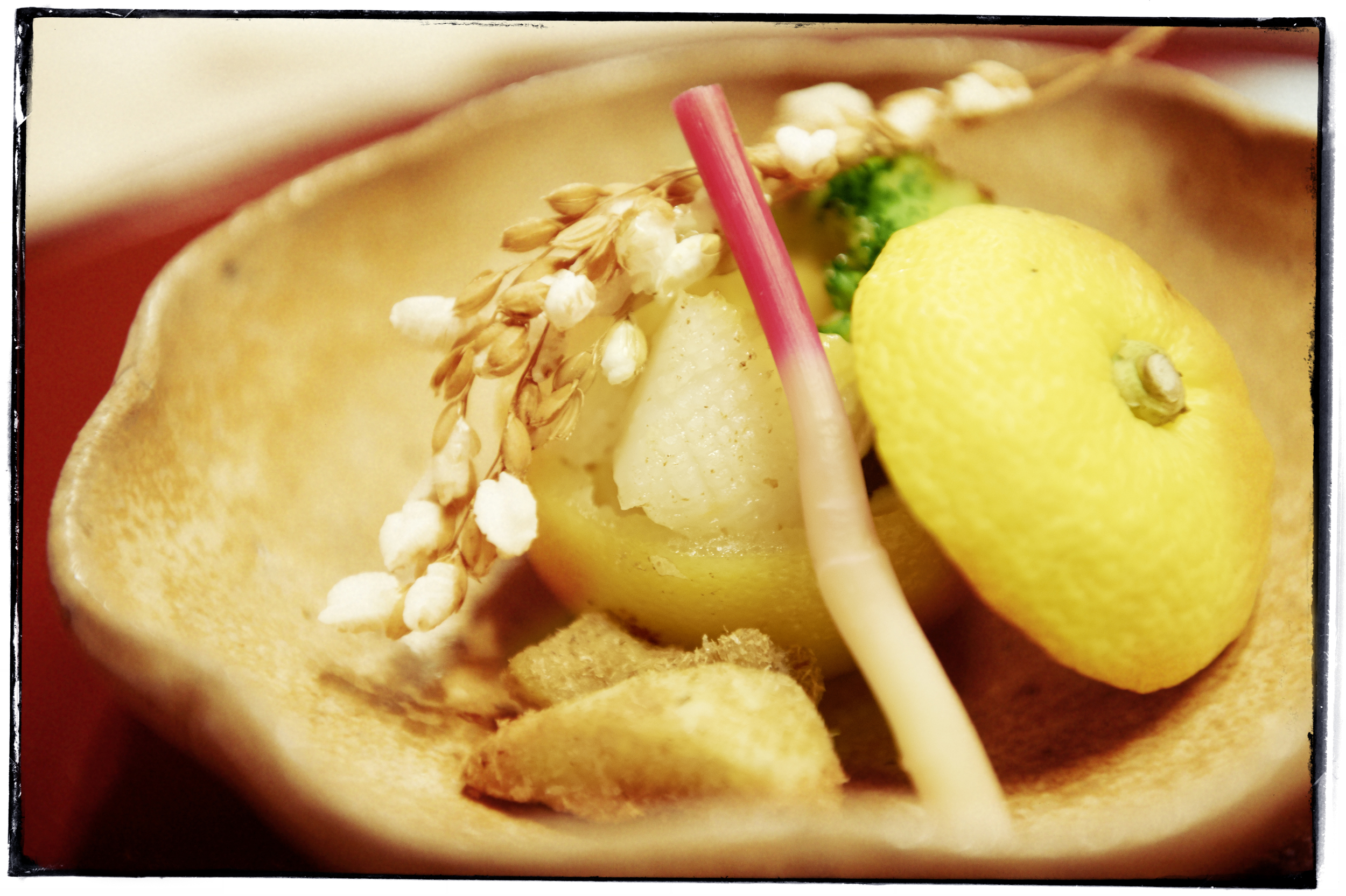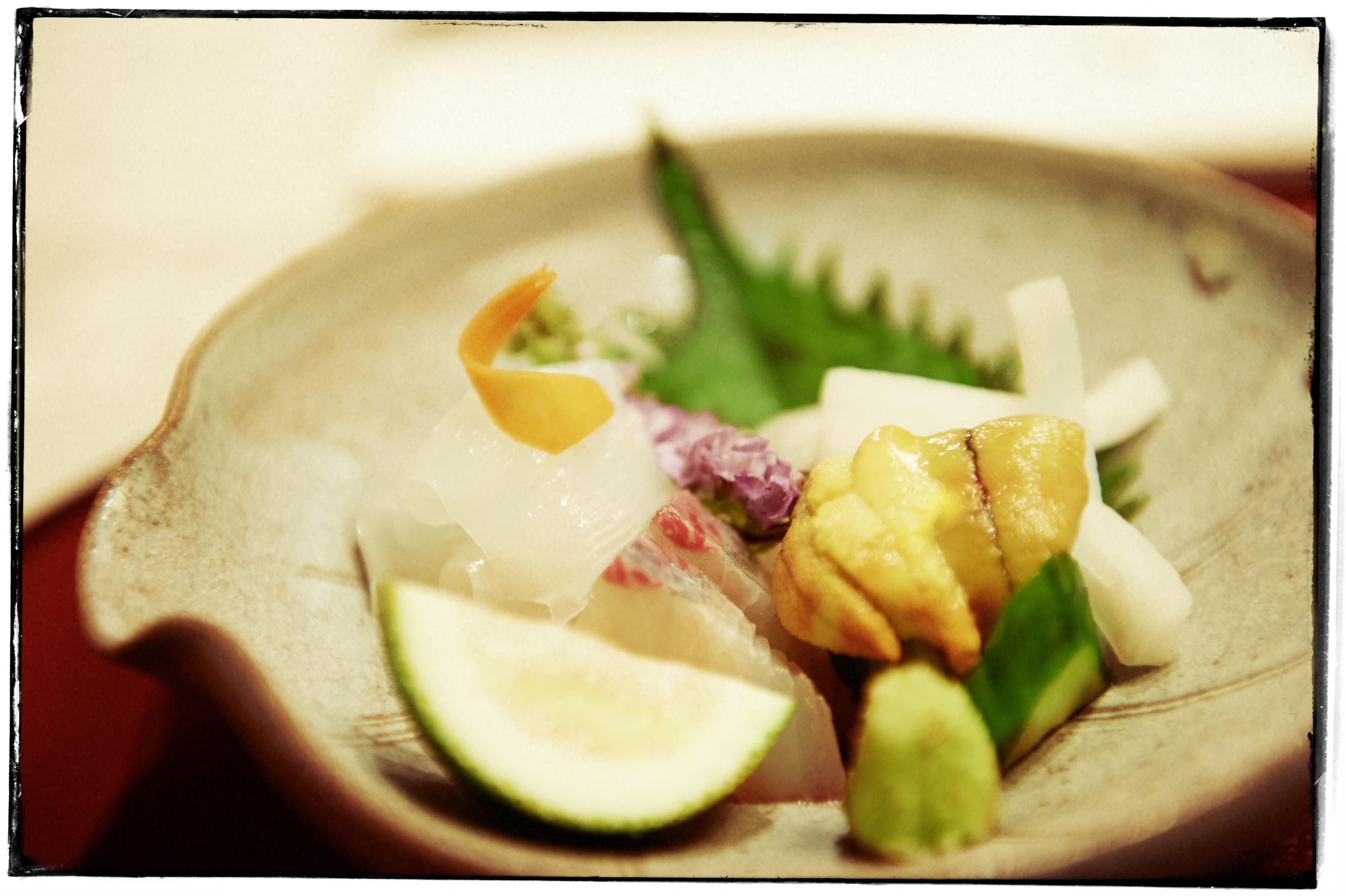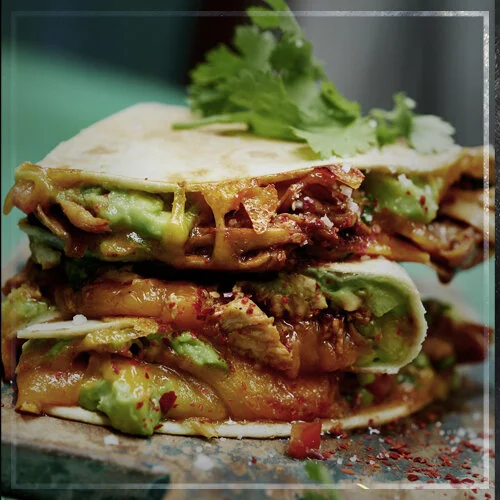.... Japan - Part I - Kyushu and the art of Wabi-Sabi .. Japan - Part I - Kyushu und die Kunst des Wabi-Sabis ....
....
Dressed in a beautiful orange-brown kimono the elegant woman bows down in welcome while her younger colleague does the same and smiles at me bashfully.
I am in a ryokan in Karatsu, a small village on the north coast of Kyushu, the third biggest island of Japan.
..
Die elegante Dame in einem hübschen orange-braunen Kimono verbeugt sich vor mir und heisst mich willkommen, ihre jüngere Kollegin tut es ihr gleich und lächelt verlegen.
Ich bin in einem Ryokan in Karatsu, ein Örtchen an der Nordküste von Kyushu, der drittgrössten Insel Japans.
....
....
It´s not the first time someone is bowing to me while on this journey. I´ve been in Japan for the last three weeks and I had time to learn how to deal with this gesture, that may seem servile to western eyes.
Just bow back (not as deep as the other though, more like a long nod), smile and say thank you. Say thank you to everything because as a client you will be treated like a king in Japan and they really mean it.
Shopping clerks will bow to you and thank you for choosing them and pack your supplies, in the subway one will thank you for asking for informations, at Starbucks for buying a tiny coffee and unashamedly using free wifi for the following three hours. And that´s not all: they will compliment your hairstyle while you´re there, unsuspecting, sipping on your caramel macchiato.
Even at public toilets: the cleaning guy will bow to you and wish you a pleasant day. If you´re drawing a comparison with your country now. well, it´s your own fault.
But back to Karatsu.
According to Tripadvisor there isn’t much to see in this former fishing village: a castle, the historic villa of a Japanese business man (which is really worth a visit) and on third place a pine forest close to the shore. Not exactly what one would call exciting.
..
Es ist nicht das erste Mal, dass sich jemand vor mir verbeugt während dieser Reise. Ich bin schliesslich schon drei Wochen in Japan und habe gelernt mit dieser, für westliche Verhältnisse unterwürfigen Geste, umzugehen. Einfach zurückbeugen (aber nicht so tief wie sie), eher wie ein verlängertes Kopfnicken, lächeln und sich bedanken. Wofür auch immer, denn in Japan ist man als Kunde König und sie nehmen es auch sehr ernst.
Im Supermarkt wird einem mit Verneigung für den Einkauf (den sie einpacken) gedankt, bei der Bahn dafür, dass man nach Infos gefragt hat, bei Starbucks dafür dass man einen mickrigen Kaffee gekauft und das freie WIFI anschliessend für drei Stunden benutzt hat. Und damit nicht genug, obendrauf gibt es noch ein Kompliment für den Haarschnitt.
Selbst in öffentlichen Toiletten wird sich der Putzmann verneigen und einem einen guten Tag wünschen. Wer jetzt Vergleiche mit Deutschland zieht, tja, naja. selber schuld.
Aber zurück nach Karatsu.
Laut TripAdvisor ist in diesem ehemaligen Fischerdorf nicht viel zu sehen: ein Schloss, die historische Villa eines japanischen Kaufmanns (die, zugegeben wirklich einen Besuch wert ist) und auf dem dritten Platz ist ein Pinienwald am Strand. Also, nicht wirklich aufregend.
....
....
Excitement isn´t what I´m for though. Yoyokaku is. One of the best and most beautiful ryokan of the country and led by the delightful Akihito Okochi.
..
Dafür gibt es einen der besten und schönsten Ryokan des Landes, Yoyokaku, geführt von dem wunderbaren Akihiko Okochi.
....
....
A ryokan is a traditional guesthouse, a Japanese custom dating back to the Edo-Period (1603-1868). Typical for it are zen gardens, sliding doors, public bathhouses and wearing yukatas.
The ladies escort me up to my room. Suite would be the more appropriate term: a large foyer, a hallway leading to a generous bathroom, a hefty bedroom with veranda. Marvellous.
Wow, is my very first thought.
The second, after a short, dumbfounded pause: and where is the bed?
My quarters are exquisitely furnished: wooden beams, polished by the years, harmonise perfectly with the tatami floor, the rice paper windows of the shoji (sliding doors) create a strong contrast to the view in the internal garden. Masterful calligraphies of Takumi Koh hang in the dimly lit alcoves and in the middle of the room, on a low, wooden table, are a few fine selected tea utensils.
Only, there is no bed, not even chairs.
Harumi-san kneels down beside the table and starts preparing tea. Her movements are so graceful and precise, her fall themed kimono so matching with the colors of the garden, that I don´t find it in me to interrupt this perfect zen moment with my profane questions.
Moreover she informs me that it´s almost time for dinner. Which means: unpack, freshen up and then be on my merry way to the next glorious meal.
..
Ein Ryokan ist ein traditionelles Gasthaus, das sein Ursprung in der Edo-Zeit (1603-1868) hatte. Typisch dafür sind seine Zen-Gärten, die Schiebetüren, Gemeinschaftbäder und das Tragen von Yukatas.
Die Damen führen mich zu meinem Zimmer, das wohl eher einer Suite ähnelt: Eingangsbereich, Flur zu einem großzügigem Bad, stattlicher Schlafraum mit Veranda. Wunderschön.
Wow, denk ich. Und nach einer kurzen, erstaunten Pause: Aber, wo ist das Bett?
Das Zimmer ist exquisit eingerichtet: von den Jahren polierte Holzbalken harmonieren ausgezeichnet mit den Tatami-Böden, die Shoji (Schiebetüren) mit ihren Reispapier-Fenster, bieten einen perfekten Kontrast zu dem Blick in den Innengarten. In den zwei Alkoven, kunstvoll beleuchtet, hängen meisterhafte Kalligraphien von Takumi Soh, in der Mitte des Raumes befindet sich ein einfacher, niedriger Holztisch mit erlesenem Tee Geschirr.
Nur kein Bett weit und breit, nicht einmal Stühle.
Harumi-san kniet zum Tisch und bereitet mir einen Tee zu. Ihre Bewegungen sind so stillvoll und präzise, ihr herbstliches Kimono so passend zu den Farben aus dem Garten, dass ich mich gar nicht traue, diesen perfekten Zen Augenblick mit meinen profanen Fragen zu ruinieren.
Ausserdem informiert sie mich, dass es gleich Zeit fürs Abendessen ist. Also kurz auspacken, sich frisch machen und ab zur nächsten glorreichen Mahlzeit.
....
....
For the reason why I´m here in a ryokan is that they serve Kaiseki cuisine.
Kaiseki roughly translates as our haute cuisine and every ryokan that is serious about its business has a chef who has mastered this art.
And the best thing? Breakfast and dinner are always in room price included. Boy, do I love Japan!
..
Denn hierin liegt der weitere Grund, wieso ich in einem Ryokan verweile: sie servieren "Kaiseki Cuisine".
Kaiseki ist das Äquivalent unserer Haute Cuisine und jedes Ryokan, das etwas auf sich hält, beschäftigt einen Chef, der diese Kunst beherrscht. Und das beste? Frühstück und Dinner sind immer im Zimmerpreis inklusive. Ach, ich liebe Japan!
....
....
Skilful decorated appetizers of lotus root and yuzu, flounder, trevally and sea urchin sashimi, grilled sea bream canapés arranged on autumn leaves, puffed rice panicles poetry, baroque adorned scallops, shell soup with sea weed and warabi, glazed octopus tentacles and so many more delicious treats, I can´t simply remember them all.
When I finally exit the dining room I am unabashedly happy and all thoughts of my missing bed have left my blissful mind.
..
Gekonnt eingerichtete Appetizer aus Lotus Wurzel und Yuzu, Sashimi vom Butt, Stachelmakrele und Seeigel, gegrillte Seebrassenhäppchen auf herbstlichen Blätter arrangiert, Gedichte aus mit gepufften Reisrispen garnierten Jakobsmuscheln, Muschelsüppchen mit Seetang und Warabi, glasierte Oktopustentakel und etliche andere Leckereien, die ich mir nicht mehr merken konnte.
Ich verlasse den Speisesaal so wunschlos glücklich, dass mich der Gedanke nach meinem verschollen Bett schon längst verlassen hat.
....
....
I take a short break to marvel at the phenomenal koi pond and when Okochi-san sees me there he obviously invite me to a round of sake.
..
Als ich eine kurze Pause einlege, um den wunderschöne Koi-Karpfen-Teich zu bestaunen, fängt mich Okochi-san auf und lädt mich zu einem Gläschen Sake ein.
....
....
One half of the cozy lobby is built on wooden piles and anchored in the pond and we sit by the open shoji windows, taking sips of our sake and enjoying the mild evening air.
Okochi-san is as a big of a fan of Japanese architecture and travelling as I am. He tells me about how he came to manage the ryokan many years ago at a time when everything traditional was frowned upon and the nation was trimmed for modernity. In a land that spawned capsule hotels he had to fight to keep the building as historically intact as he could and still financially successful.
I voice my admiration for the ryokan´s garden, for its tiny ponds and its well shaped trees, for the pristine water basins and the hidden benches, that unfailingly prompt the visitors to linger and enjoy. Okochi-san smiles this Japanese, serene smile, sips on his sake and tells me about wabi-sabi.
Wabi-sabi, so he begins, is the notion that beauty is incomplete and fleeting: nothing is finished, perfect or even permanent.
This idea has its origin in the zen-buddhist teachings and is so deeply engraved in Japanese culture that it permeates every level of society.
It manifests itself in the art forms of ikebana or of the tea ceremony, in the watercolors of a koi carp, in the simple, asymmetrical curves of domestic pottery, in the organic turns of a bonsai tree or in hanami, the almost fanatical worship of cherry blossom every spring.
..
So sitzen wir da, in der gemütlichen Lobby, die halb auf Stelzen in dem Koi-Teich verankert sind, schlürfen warmen Sake und geniessen die noch milde Abendluft.
Okochi-san ist wie ich ein großer Fan der japanischen Architektur und des Reisens. Er erzählt mir, wie er das Ryokan vor vielen Jahren übernommen hat, zu einer Zeit, als das Traditionelle verpönt und die Nation auf modern getrimmt war, in einer stetigen Fahrt auf der technologischen Überholspur.
In einem Land das Capsule Hotels hervorgebracht hat, musste er kämpfen um das Gebäude so herkömmlich zu erhalten und das Ryokan finanziell erfolgreich zu führen.
Ich äussere meine grosse Bewunderung für den Garten des Ryokans, für die kleinen Teiche und die wohl geformten Bäume, für die ursprünglichen Wasserbecken und seine versteckte Bänke, die einem zum verweilen und geniessen einladen. Er lächelt dieses japanische, friedliche Lächeln, trinkt einen kleinen Schluck Sake und erzählt mir vom Wabi-Sabi.
Wabi-Sabi, so fängt er an, ist die Idee, dass Schönheit unvollständig und vergänglich ist, nichts fertig, perfekt, oder von Dauer.
Diese Vorstellung findet seinen Ursprung in der Zen-buddhistischen Lehre und ist so tief verankert in der japanischen Kultur, dass es damit auf allen sozialen Ebenen präsent ist.
Es manifestiert sich in den Kunstformen des Ikebana oder der Tee-Zeremonie, in den Aquarellfarbe der Kois-Karpfen, in den schlichten und asymmetrischen Kurven des heimischen Töpferhandwerks, in den organischen Windungen eines Bonsaibaumes oder in dem fast fanatisch-religioses Anbeten des Hanamis, das Kirschblüten-Fest.
....
....
We talk for hours and into the night while a second bottle of sake keeps us company.
When I finally stumble back to my room I trip over something that hasn’t been there in the afternoon: a futon.
On the floor, unfolded and fluffy looking, a divine revelation! The maids must have arrange it while I was out for dinner.
I collapse into the sheets, my sleepy thoughts drifting lazily and thanking, in no particular order, the concept of wabi-sabi for its simple frugality that doesn’t require a sleeping place during the day, the Japanese idea of service for pampering me and making my bed and of course Okochi-san for his hospitality and holy shit, swell sake!
And of course I have also brought a Kaiseki recipe:
..
Wir reden und reden, der Abend wird lang und eine zweite Flasche Sake geköpft.
Als ich schliesslich auf wackeligen Beinen in mein Zimmer zurückkehre, stolpere über etwas, was am Nachmittag noch nicht da gewesen ist: ein Futon.
Auf dem Boden ausgebreitet und wuschelig aussehend, eine Offenbarung! Die Damen müssen es vorbereitet haben, als ich beim Essen war.
Ich versinke in den Federn und bedanke mich in Gedanken beim Wabi-Sabi, welches in seiner schlichten Bescheidenheit keinen Schlafplatz bei Tage vorsieht, dem japanischen Serviceverständnis, wo man mir bereitwillig das Bett arrangiert und bei Okochi-san für seine Gastfreundschaft und oh man hey, geiler Sake!
Und natürlich hab ich auch ein Kaiseki Rezept mitgebracht:
....
....
Directions:
Heat a pan until it slightly begins to smoulder. Then, fry the unseasoned fillet for 10 seconds on either side, allowing a thin crust to form.
Take the fillet quickly out of the pan and dry with a paper towel. Mix white and black sesame seeds in a large bowl. Lightly coat the fillet with the mustard and toss in sesame seeds until evenly covered. Cool for around 20 min.
At a slight angle, slice the spring onions into rings. Set aside with the bonito and radish as toppings.
Mix all ingredients for the dressing and add sugar to taste.
Lastly, thinly slice the fillet, cover with toppings and serve.
..
Zubereitung:
Eine Pfanne heiß werden lassen bis sie langsam anfängt zu qualmen. Danach das Filet ungewürzt für etwa 10 sekunden auf jeder Seite scharf anbraten, sodass sich ein dünner Rand bildet.
Filet direkt aus der Pfanne nehmen und mit einem Küchenkrepp abtrocknen. Weißen und schwarzen Sesam in einer großen Schüssel mischen. Das Filet dünn mit Senf bestreichen, im Sesam so welzen, dass es gleichmäßig bedeckt ist und für etwa 20 min kühlstellen.
Frühlingszwiebeln leicht schräg in Ringe schneiden und mit Bonitoflocken und Rettich zur Seite stellen als Topping.
Für die Sauce alle Zutaten verrühren und evtl. mit etwas Zucker abschmecken.
Zum Schluss das Filet in sehr dünne Scheiben schneiden, mit den Toppings belegen und servieren.
....
....
Tuna Tataki:
500g tuna fillet
2 tbsp oil
100g white sesame seeds
100g black sesame seeds
50g mild mustard
5g flaked bonito
2 spring onions
150g radish
wasabi
Tataki Dressing:
1 1/2 tsp finely grated ginger
2 tsp soya sauce
3 tsp sesame oil
1 1/2 tsp lime juice
perhaps a pinch of sugar
..
Tuna Tataki:
500g Tunfischfilet
2 El Öl
100g weißer Sesam
100g schwarzen Sesam
50g milder Senf
5g Bonitoflocken
2 Frühlingszwiebeln
150g Rettich
etwas Wasabi
Tataki Sauce:
1 1/2 Tl fein geriebener Ingwer
2 Tl Sojasauce
3 Tl Sesamöl
1 1/2 Tl Limettensaft
vtl. eine Prise Zucker
....
....
(Recipes created by Christoph Steinhauser)
..
(Rezepte entwickelt von Christoph Steinhauser)
....









































